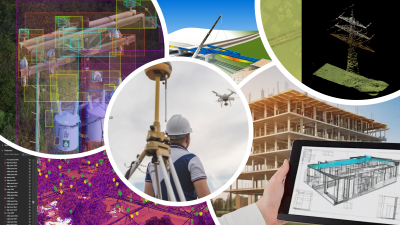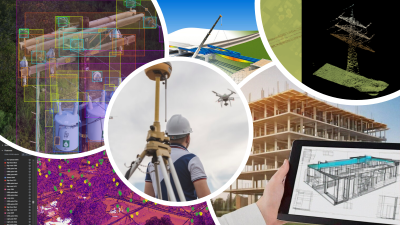The world around the AEC industry has been revolutionized in recent years thanks to technological innovation and adoption, with that revolution hitting every stage of a project. From design to construction to project management to operations and maintenance, new technology touches every piece of the puzzle. Amid all of this change, though, it can be easy to be swept up in the excitement of new products and miss the forest for the trees, so to speak.
Instead, it’s crucial to keep practicality in mind, and to think about how your team can implement the new tools to maximize derived value. This was the focus of a recent webinar hosted at Geo Week News entitled Practical AI and FieldTech Implementation Strategies. As the name suggests, the webinar, sponsored by Fulcrum, focuses on technologies utilized in the field and how engineering firms can best take advantage of these new tools to streamline their workflows.
The webinar featured two speakers from the Fulcrum team – VP of Product Coleman McCormick and CTO Zac McCormick – as well as Jared Carey, an Innovation Specialist with TREKK Design Group. The latter spoke as an end user who faces these challenges in the field and was able to provide real-world examples of how Fulcrum’s products helped streamline his team’s operations. Use the link below to register for your free, on-demand recording of the conversation.
The webinar began with Coleman McCormick providing some important context for the rest of the conversation, giving background on Fulcrum itself and setting the agenda for what was to follow. In terms of the former, he explained how Fulcrum’s platform streamlines field work and management of data collected in the field, with much of the focus here being on imagery data taken from 3D cameras and UAVs. With the example of a water utility contractor being used throughout the webinar – though certainly not the only end user of the platform – McCormick provided specific examples of how Fulcrum’s platform is able to streamline operations, and how artificial intelligence could – and in some cases, is – accelerating that work.
Ultimately, McCormick highlights the benefits from using a system like Fulcrum to provide a “system of records” that can bring in data from FieldTech systems – defined as tools used in the field – and enterprise, or back-office, systems. In other words, that means connecting data from cameras and UAVs with things like GIS systems, along with data from on-site sensors, GNSS receivers, and more.
From there, Carey took over the conversation to connect some of the broader concepts laid out by McCormick and discuss how he and his team utilize this in the field. While he notes that the overall company has its hands in a number of different disciplines, and Fulcrum is utilized to some degree across many of those workflows, the water management team most utilizes it. Carey goes on to provide some specific ways in which work around things like manhole inspections have changed within his tenure with the company, and the ways that technology like Fulcrum’s has enabled them to make their work more efficient and eliminate crucial errors, including some specific integrations with on-site hardware as well as platforms like ArcGIS online that have benefited the work.
Finally, the webinar was closed out with a presentation from Zac McCormick, focusing on the ways that artificial intelligence is being thought about by the company. Obviously, generative AI is what dominates most of the AI conversation these days, but Fulcrum is focusing on other types of artificial intelligence to help teams in the field. We are still very much in the early days of this boom around AI, and McCormick acknowledges as such.
That said, he openly discusses the way Fulcrum is thinking about these advancements, giving examples of some of the capabilities they have only recently implemented, as well as what they believe could be other use cases and what they are researching for their offerings. He’d go on to provide sample examples of how AI can benefit real customers in a tangible way, and provided a live demonstration for the Fulcrum application. We won’t give away the demonstration, but it was a great resource to see how these workflows can benefit in the real world.
If you are one of the many AEC professionals who is being inundated with new technology but still trying to grasp how to integrate everything together in a way that makes sense and is easy for everyone in the field to use, this webinar will provide those answers, with details from someone who is in that very same position. So, don’t miss your chance to register below and receive your free, on-demand recording of the conversation.








